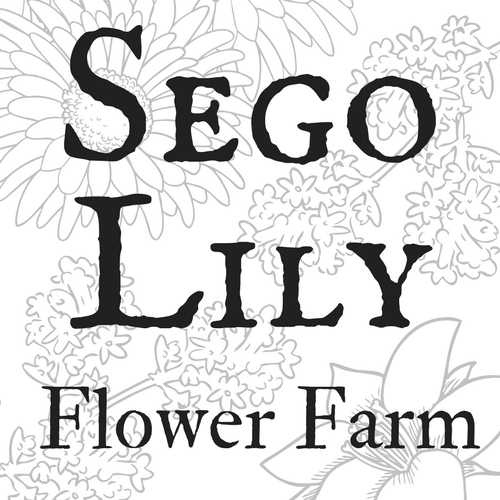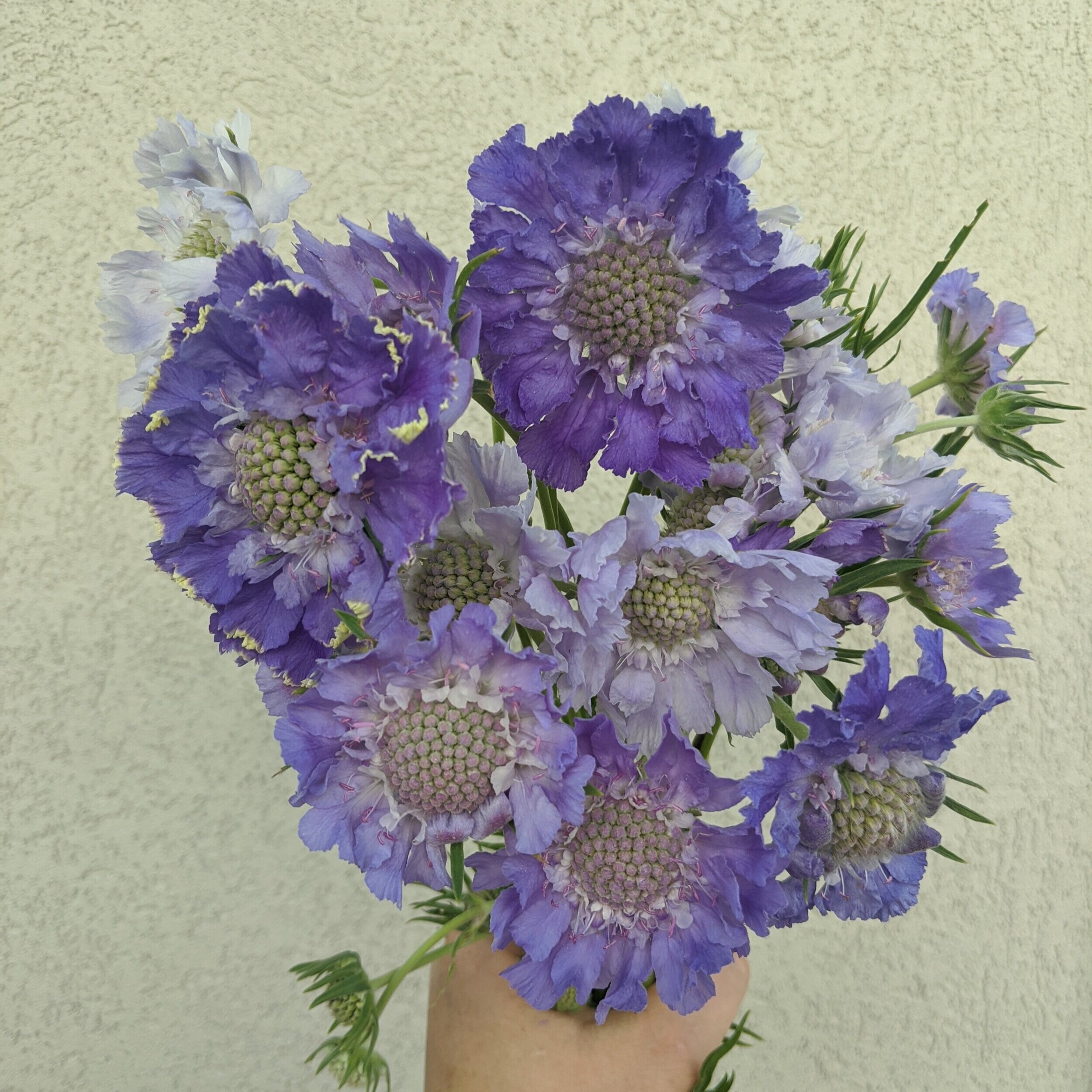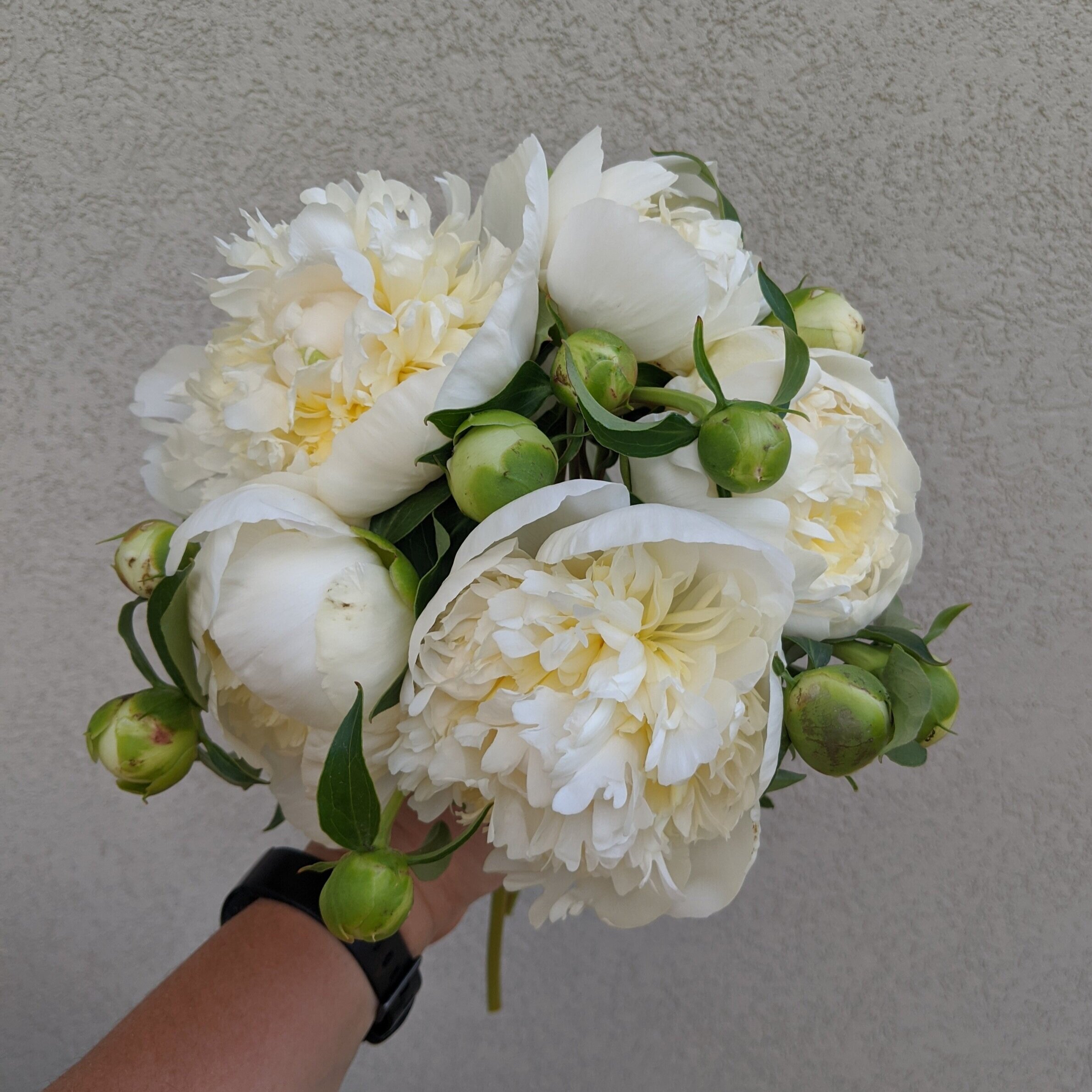Last weekend at the Utah Food and Farm Conference I was asked during my talk to name my top ten cut flowers for beginning flower farmers or cut flower gardeners. I thought it would be fun to answer that same question here, only I plan on sharing my top fifteen. Yay!! Five extra flowers to talk about!
Let’s start with my favorite perennials for cutting gardens, shall we? Often people want to start with annuals, but perennials provide a great backbone to your cut flower garden. And because they take a little while longer to get established it’s a good idea to get them planted sooner than later. Keep in mind there are lots more perennials that make great cut flowers, but these particular cultivars are ones I can’t imagine not growing.
1. Rudbeckia hirta Prairie Sun
This gloriously happy flower is like pure sunshine in a bouquet. Easy to start from seed, it produces blooms from June to September in northern Utah. I love it arrangements with snapdragons and feverfew.
Rudbeckia “Prairie Sun”
2. Scabiosa “Fama White and Fama Blue”
Also know as pincushion flower, this is often the first perennial to really getting going and will keep going till frost. Available in blue (a cooler lavender-blue) and white. These sweet blossoms can be seed grown or found at local nurseries.
Scabiosa “Fama Blue”
3. Peonies
No matter how you pronounce it, peonies are really the queen of the cut flower garden. These beautiful focal flowers fill a void in late spring. Double petaled varieties typically last longer in a vase than single or semi-double varieties. You can’t go wrong with Coral Sunset, Duchesse De Nemours, Shirley Temple, and Sarah Bernhardt for cut flower gardens.
Paeonia “Duchesse De Nemours”
4. Solidago “Golden Baby”
I l.o.v.e. goldenrod! It’s the little magic touch that gives every bouquet a bit of sparkle. The variety Golden Baby is a winner because you can start it from seed and it tends to be more well behaved than other solidagos. It blooms and reblooms June till frost.
Solidago “Golden Baby”
5. Sedum “Autumn Joy”
Sedums make great cut flowers, sometimes even rooting in the vase. The trick is to make sure you choose tall cultivars, at least 18 inches in height. Autumn Joy is plenty tall enough and a beautiful pink that works well with bright summer colors and the richer shades of fall.
Sedum “Autumn Joy”
A little bonus note on Foliage
There are lots of greenery you may already be growing in your yard. If it looks like something that would look good in a vase, clip it and bring it inside to test. Some foliages I like to use are raspberry leaves, mint, bee balm, and lady’s mantle.
A bucketful of raspberry, ladies mantle, and bee balm foliage.





















